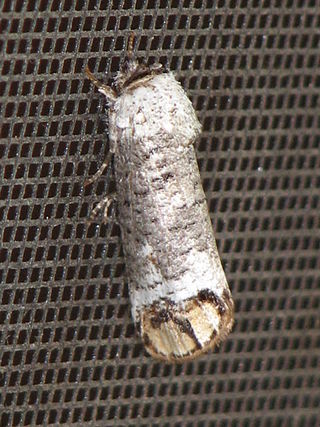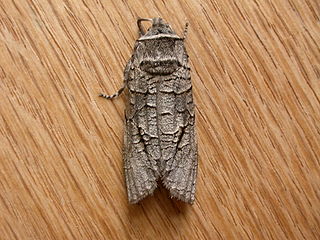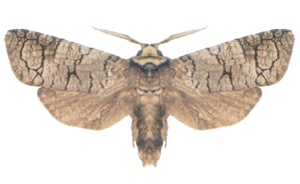
The Cossidae, the cossid millers or carpenter millers, make up a family of mostly large miller moths. This family contains over 110 genera with almost 700 known species, and many more species await description. Carpenter millers are nocturnal Lepidoptera found worldwide, except the Southeast Asian subfamily Ratardinae, which is mostly active during the day.
Catopta is a genus of moths in the family Cossidae.

Culama is a genus of moths in the family Cossidae.
Culama glauca is a moth in the family Cossidae. It was described by Kallies and D.J. Hilton in 2012. It is found in Australia, where it has been recorded from Western Australia and New South Wales. The habitat consists of dry woodlands, mallee and heath.

Culama suffusca is a moth in the family Cossidae. It was described by Kallies and D.J. Hilton in 2012. It is found in Australia, where it has been recorded from southern Victoria, northern New South Wales, Tasmania and the Australian Capital Territory. The habitat consists of wet sclerophyll forests.

Culama crepera is a moth in the family Cossidae. It was described by Turner in 1939. It is found in Australia, where it has been recorded from southern Western Australia, through South Australia to western-central Victoria and New South Wales.
Culama dasythrix is a moth in the family Cossidae. It was described by Alfred Jefferis Turner in 1945. It is found in Australia, where it has been recorded in southern Western Australia.
Macrocyttara pamphaea is a moth in the family Cossidae. It was described by Turner in 1945. It is found in Australia, where it has been recorded from Queensland, South Australia, the Northern Territory, New South Wales and Victoria. The habitat consists of dry woodland.

The Zeuzerinae are a subfamily of the family Cossidae.
Cossodes is a monotypic moth genus in the family Cossidae. Its sole species, Cossodes lyonetii, is found in south-western Western Australia.

Zyganisus is a genus of moths in the family Cossidae.
Trismelasmos is a genus of moths in the family Cossidae.
Zyganisus cadigalorum is a moth in the family Cossidae. It is found in Australia, where it has been recorded from the Sydney area.

Zyganisus fulvicollis is a moth in the family Cossidae. It is found in south-eastern Australia, where it can be found from Tasmania and Victoria to the Australian Capital Territory and New South Wales.

Zyganisus propedia is a moth in the family Cossidae. It is found in Australia, where it has been recorded from Victoria, South Australia and southern Western Australia. The habitat consists of lowland coastal forests, dry forests and heathland.

Endoxyla cinereus, the giant wood moth, is a moth in the family Cossidae. It is found in Australia and New Zealand. The species was first described in 1890. A rare contemporary sighting of the moth at a school in Australia garnered notice as an editor's pick among the daily headlines of the New York Times on May 8, 2021.
Endoxyla opposita is a moth in the family Cossidae. It is found in Australia, where it has been recorded from Queensland, Victoria and New South Wales.
Endoxyla secta is a moth in the family Cossidae. It is found in Australia, where it has been recorded from Queensland, South Australia and Western Australia.
Endoxyla nephocosma is a moth in the family Cossidae. It is found in Australia, where it has been recorded from Queensland and Northern Australia.
Endoxyla vittata, the orange-lined wood moth, is a moth in the family Cossidae. It is found in Australia, where it has been recorded from Western Australia.








